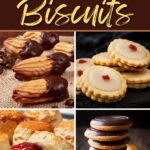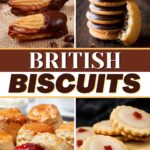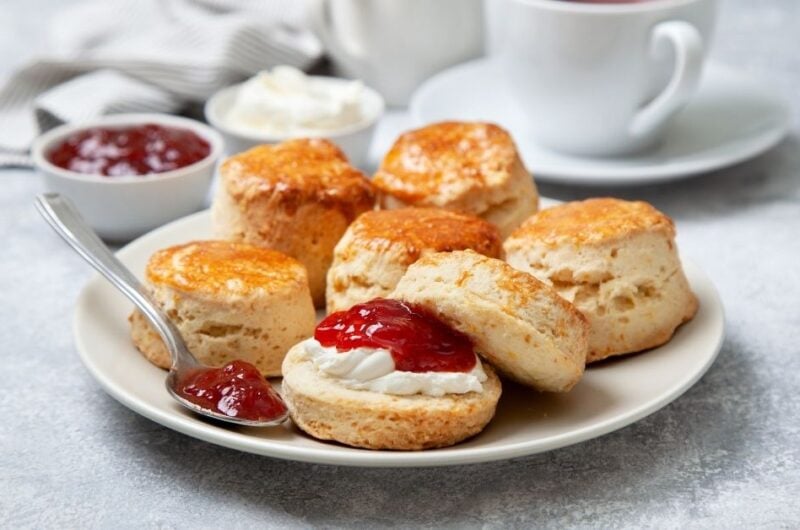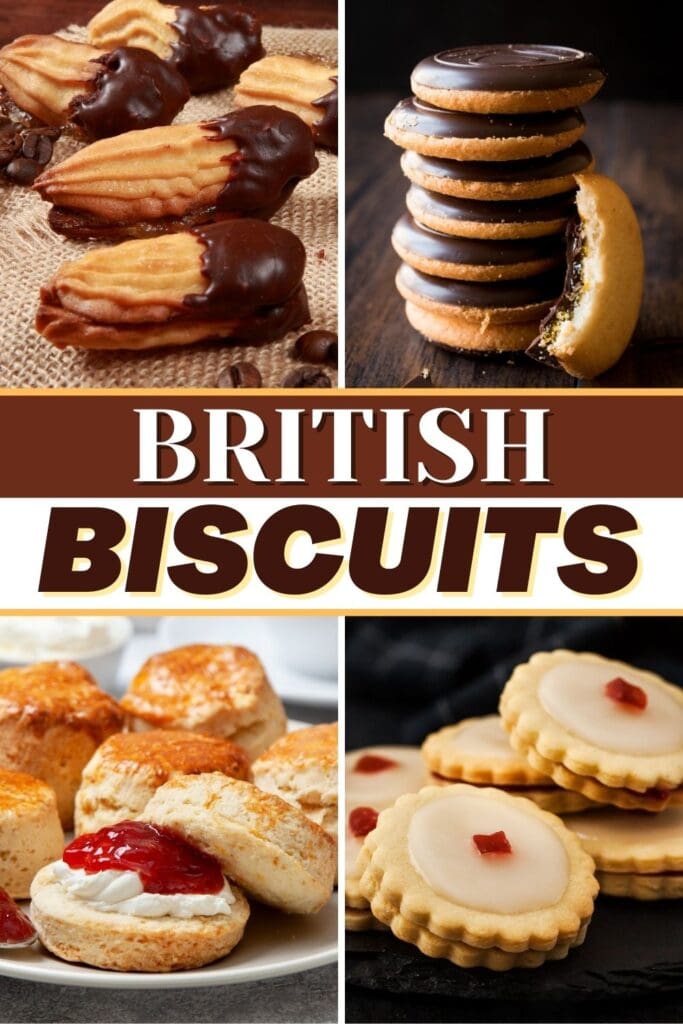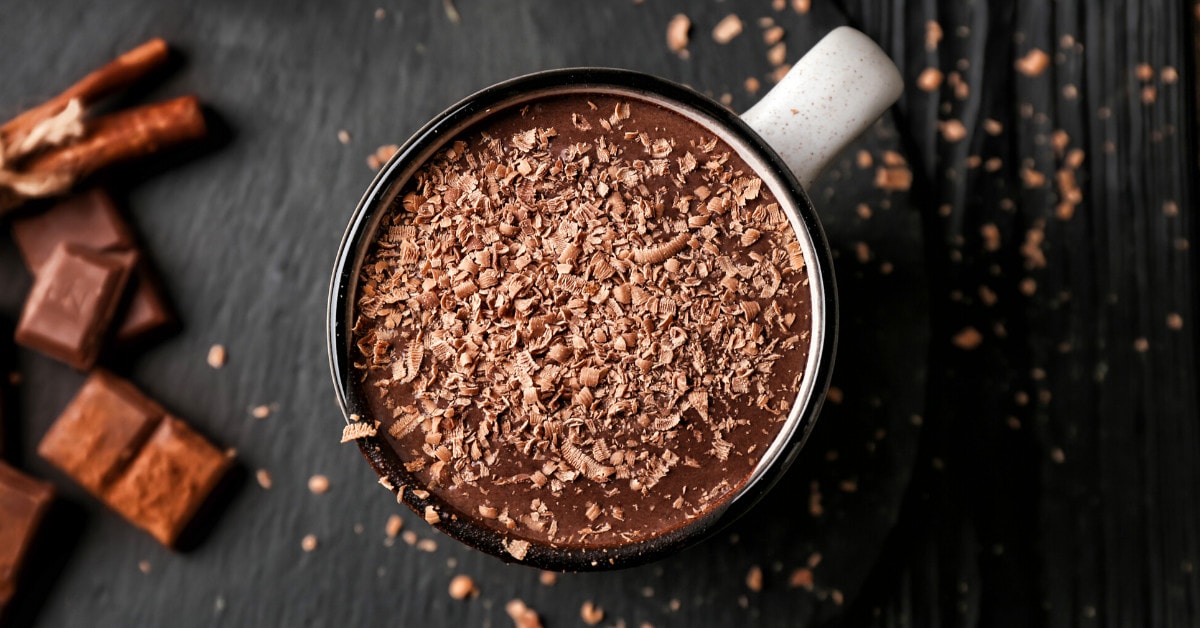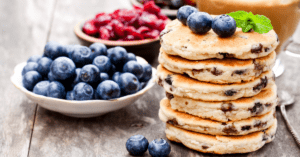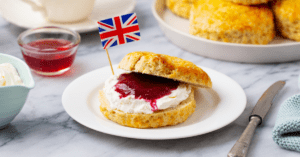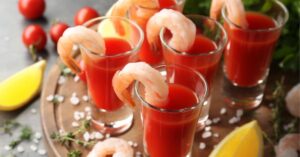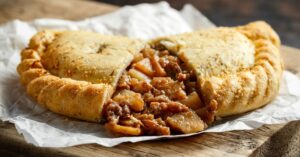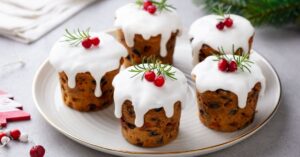From jaffa cakes and hobnobs to bourbons and custard creams, you won’t be able to get enough of these treats. I remember spending the holidays in the UK and my eyes lighting up when the biscuit box made its way around. You could call these cookies, but they’re so much more. Biscuits are taken very seriously across the pond, and they’re best served with a steaming hot cuppa (cup of tea). So, put the kettle on and settle in because each of these is better than the last.
Homemade British Biscuits We Can’t Get Enough Of
1. Scottish Shortbread
Shortbread is quintessentially Scottish, and they’re very proud of it. I don’t blame them! I think it’s about as perfect as a biscuit gets. If you see a shortbread recipe with more than three or four ingredients, try another. It should only ever be a super simple blend of sugar, butter, and flour (and maybe vanilla if you’re posh). The term comes from the texture of the biscuits, which is very “short.” That just means it’s lightly crisp on the outside and wonderfully crumbly on the inside. To achieve this, you’ll need to handle the dough as little as possible. Once the butter and sugar are blended, add the flour carefully and only mix until it just comes together. The English like to top theirs with a thin layer of sugar that sticks as it cooks. But for the real deal, keep it simple and buttery.
2. Classic British Bourbons
Despite the name, there’s no alcohol in these biscuits. Instead, they get their name from where they were invented and the hometown of the inventor, Bourneville, and Bonn respectively. Also, where we would typically say “ber-bon,” this is actually pronounced “boar-bon.” I’ve heard this likened to an Oreo, though the chocolate flavor isn’t as intense. Rather, it’s a light chocolate cookie with chocolate cream inside. You’ll notice that there are no eggs in the dough, only a little milk to help it bind. That’s because these aren’t made to rise. Be sure to chill them before you bake so they keep their shape, and let them cool down completely before adding a thin layer of chocolate cream to the middle. For the real British experience, dip one in a cup of tea for a few seconds before you eat it.
3. British Hobnob Biscuits
If you’ve ever made British flapjacks or maybe Aussie Anzac biscuits, you’ll know that a lot of their baking includes golden syrup. Where we typically use molasses to add flavor and texture, our friends overseas almost always use golden syrup (or treacle). Golden syrup is a type of light treacle (inverted sugar syrup) that’s amber in color and has a beautiful buttery taste. Corn syrup is the closest thing we have, but I wouldn’t try substituting it. It’s super unique to British-style baking, and I haven’t been able to buy the stuff in my local grocery stores. So, I just make my own, and it’s easier than you think. When you have it ready to go, these hobnobs are delicious. They’re oat-flavored but not soft like an oatmeal cookie, and there are no raisins in sight. The golden syrup makes them caramel-flavored and buttery, and though they’re not chewy, they are tender.
4. Homemade Jaffa Cakes
Believe it or not, there’s been a lot of controversy around the classification of this 1920s creation. Named for the jaffa orange, these consist of a round vanilla cake disc topped with a circle of orange jelly, and then it’s all topped off with a layer of dark chocolate. Initially, they were marketed and sold as mini cakes, which meant they were exempt from the VAT placed on chocolate biscuits, a luxury item. Then, in 1991, a VAT tribunal was held to decide if this treat was, in fact, a cake or if it should be classified as a biscuit (and, as a result, have to start paying value-added tax). In the end, McVitie’s won out with their argument that the genoise sponge turns hard if these are left out, where biscuits would usually go soft. Pretty silly all around if you ask me! All I know is that these are soft, sweet, and wonderfully rich, thanks to all that chocolate. Oh, and since I can dunk it in my tea, I’m firmly in the “biscuit” camp!
5. Homemade Party Rings
Party rings are so comfortingly British, and just the thought of them will leave you with serious nostalgia. They’re pretty simple when you pick them apart, but it’s more about how and when kids ate them. As the name suggests, these often made an appearance at birthday parties. The biscuit itself is a simple shortbread dough, only it doesn’t have any vanilla because it gets coated in a sweet glaze. But the glaze is crucial! It can’t just be white or pink or blue. It needs to be colorful and with stripes that you’ll feather with a toothpick.
6. Black Currant Tea Biscuits
Black currants are super popular in the UK, with one of their most popular drinks, Ribena, being made from these juicy berries. It’s not too sweet and slightly acidic, plus the color is stunningly deep. Unfortunately, they were banned in the states in the early 1900s because they were thought to produce a fungus that was killing pine trees. As a result, it’s not a familiar flavor for us. Still, I highly recommend giving these a go. Chances are, you’ll need to look online for the currants, though some health food stores might have them in stock.
7. Empire Biscuits
Due to the similarities between these and Linzer cookies, they were once known as the Deutsch (German) Biscuit. When WWI started, however, the name was quickly changed to Empire. No matter what you call them, they’re scrumptious. Like Linzer’s, these have a light and buttery biscuit and a wonderfully tart layer of raspberry jam in the middle. But what sets them apart is the layer of icing on top and a little piece of cherry in the middle.
8. Buttery Sultana Cookies
Sultanas are essentially raisins; only they’re exclusively made from seedless green grapes. They’re most often used in British baking, along with golden raisins. I remember my Grandma making something close to this as a kid, and we used to laugh and squirm because she called the fly-cookies. According to her, there were no little black dots when she put them in the oven! Of course, you can use raisins here, though sultanas are typically smaller, so maybe cut them in half first.
9. Homemade Malted Milk Biscuits Recipe
Malted milk is a unique blend of malted barley, wheat flour, and evaporated whole milk powder. It’s hard to describe the flavor, but you’ll know it as soon as you try it. Have you ever had Malteasers? They’re made with malted milk too! Horlicks is probably one of the most well-known, or maybe Ovaltine. It’s often drunk like hot chocolate, warm and with lots of milk or hot water. In cookies and biscuits, it’s used for flavor, as well as added texture. In addition, it helps to keep the biscuits tender for longer. This recipe also calls for golden syrup, so if you made a batch for the hobnobs, you could use the rest for this recipe.
10. Cornish Fairings
Cornish fairings are a type of spiced ginger biscuits from, as you’ve probably guessed, Cornwall. The name comes from the idea of a “fairing,” which was a treat given to a loved one in farewell. Unlike gingerbread men, which are usually soft in the middle, these are closer to ginger snaps in that they’re crunchy and will snap when you break them in half. Once again, you’ll see golden syrup on the list. Didn’t I warn you that a lot of British baking uses the stuff? Unusually, this recipe is vegan, using vegan butter in place of regular and containing no eggs. Though, of course, you can use regular butter if you want. Click on a star to rate it!
Average rating 5 / 5. Vote count: 2 No votes so far! Be the first to rate this post.
Share on social media: Let us improve this post!
